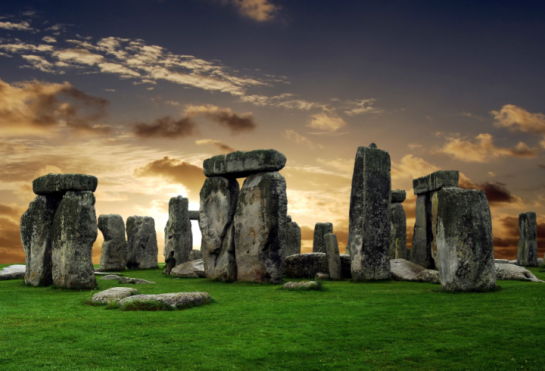CLICK HERE TO READ OUTREACH ARTICLES ABOUT AMGC RESEARCH
These are mainly publications aimed for a large audience or schools, reporting on recent results of the group.
BELOW IS A LIST OF RECENT SCIENTIFIC PUBLICATION OF AMGC THAT RECEIVED MEDIA COVERAGE.
16.06.2022
Professor Steven Goderis talked to journalists of the Belgian popular newspaper "Het Nieuwsblad" over the value of meteorites for the collectors ready to pay lots of money and for the scientist interested in learning about solar system and planet formation, in an well illustrated article titled "Stukje meteoriet gevonden? Het kan je véél geld opleveren, al willen wetenschappers ook hun deel" (in UK: Found a piece of a meteorite ? It brings a lot of money, however scientists also want their share)".
Read the article (in Dutch) here.
04.04.2022
New paper by Dr. Christina Cheung a post-doctoral researcher from AMGC and BBLab made the headline in the South China Morning Post.
The paper recently published in The Journal of Island and Coastal Archaeology used stable isotopes of carbon and nitrogen to demonstrate that neolitic Hongkongers really loved seafood; they very much relied on it for their diet, much more than on farming. The study analysed 13 skeletons from Ma Wan Island in Hong Kong. Such reliance on seafood is quite unusual even among coastal populations, which most commonly have a much higher proportion of their diet coming from land.
Read the South China Morning Post news here
Read the original paper here
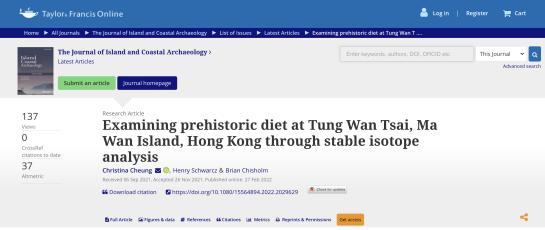
27.01.2022
World-press coverage of new paper on finding meteorites in Antarctica
Machine learning helps find Antarctic meteorites, new paper by PhD student Veronica Tollenaar (@FNRS) and Dr. Harry Zekollari in Science Advances read it here in open access. A fine collaboration @ULBruxelles, @VUBrussel, @TUdelft.
Antarctica in the best place to find meteorites, we have been collecting them there since 2009 with Japanese colleagues. This new paper shows that perhaps another 300,000 meteorites are waiting for us on the ice fields of the South Pole.
Help find them at wheretocatchafallingstar.science
Or check this website to understand where they occur, and read about it in VUB Today
You can also read about it in the medias: NBC News; VRT news; De Standaard; HLN; Nieuwsblad; France 24; La libre Belgique; Inverse; Popular Science, Numerama etc.
American Geophysical Union (AGU) EOS magazine wrote about it.
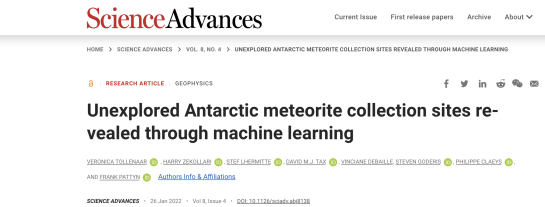
11.06.2021
Great press coverage of Niels de Winter new paper on accurate paleotemperature reconstructions in the Cretaceous
NEWS COVERAGE: in Knack, Phys.org, VRT, Science Daily, Yahoo news, Science news, Science.KU.Dk etc (Altmetric)
In this new paper published in Nature Communications Earth & Environment Dr. Niels de Winter and co-authors reconstruct absolute seasonal temperature by measuring clumped isotope in bivalve shells. They prodiced highly precise monthly sea surface temperatures at around 50 °N latitude from individual oyster and rudist shells of the Campanian greenhouse period (78 million years ago) the seasonal range at 50 °N comprised 15 to 27 °C. In agreement with fully coupled climate model simulations, greenhouse climates outside the tropics were warmer and more seasonal than previously thought.
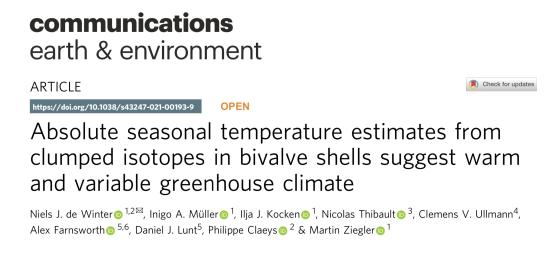
Read the paper here or download it, or check out the VUB press release here
02.04.2021
New Science Advances paper gets international press coverage
NEWS COVERAGE: CNN; National Geographic; BBC; Brussels Times; RTBF; VRT news; Het Nieuwsblad; Sciencenews ... (Altmetric)
Dr. Matthias Van Ginneken, former AMGC post-doc and now a research at the University of Kent in Canterbury and Steven Goderis from AMGC describe the first strong evidence for the discovery of a large airburst over Antarctica some 430 thousand years ago. Such large airbursts should occur rather frequently as a meteorite explodes in the Earth atmosphere, but are rarely reported. The paper illustrates condensation spherules discovered in the Sør Rondane Mountains of East Antarctica; which, based on their oxygen isotopic signature, seem to have come in contact with Antarctica ice. Their formation, - supported by numerical modeling -, results most likely from a touchdown event, in which a jet full of projectile vapor interacts with the ice sheet.
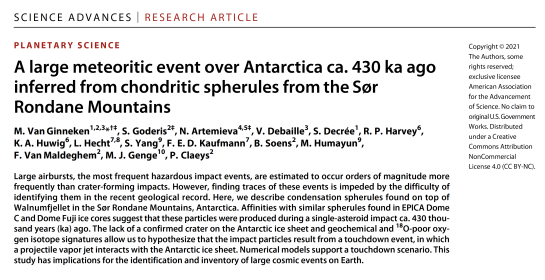
Read the paper here and check out VUB Today for a summary.
24.02.2021
Steven Goderis paper on Ir detection in the Chicxulub crater in the spotlight
NEWS COVERAGE: UT Texas news; Planetary News; Kurier (Vienna); Astronomy News; De Morgen; Het Laatste Nieuws; HLN Interview Steven Goderis; RTBF; RTL_NL; Sci News; The research was also featured in Physics Today. (Altmetric)
In this new Sciences Advances paper (click here for open access) Professor Steven Goderis once and for all demonstrates the link between the formation of the 200-km Chicxulub crater buried under Yucatan and the Cretaceous-Paleogene (K-Pg ot K-T) boundary mass extinction by finding the famous elevated iridium concentrations within the impactite rocks drilled in 2016 by IODP-ICDP withint the peak-ring of the impact structure.
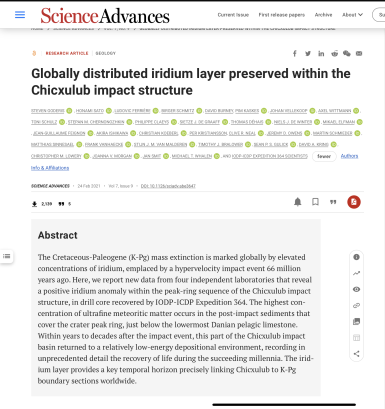
15.02.2020
AMGC paleoclimate reconstructions using speleothems (stalagmite) is on TV, featuring Dr. Sophie Verheyden and Prof. Philippe Claeys
NEWS COVERAGE: Click here to see the documentary in French from RTBF
01.09.2019
New Science Advances paper on extra-terrestrial dust causing ice age and extinction in the mid-Ordovician makes an impact
NEWS COVERAGE: The Guardian, Science News, Independent, The New York Times (Altmetric)
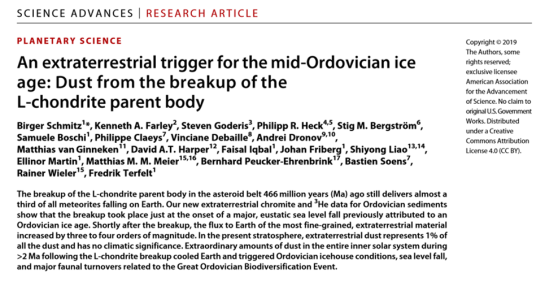
Read the open access paper here.
16.08.20218
VUB researcher Prof. Christophe Snoeck contributes to solve Stonehenge mystery
Dr. Christophe Snoeck's paper on " Strontium isotope analysis on cremated human remains from Stonehenge support links with west Wales " that was published in Nature Scientific Reports is seen as a breaktrough in developing insights on the Stonehenge mystery.
NEWS COVERAGE: BBC News, CNN, The Washington Post, The Guardian, Science News, El Pais, De Morgen, De Standaard and many more (Altmetric)
